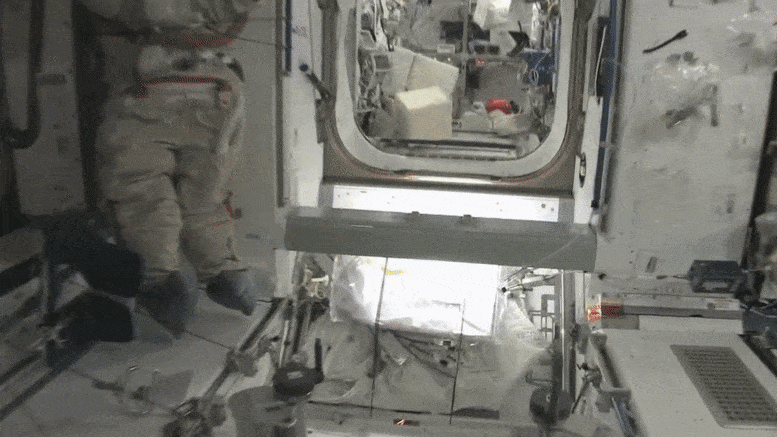

Three new strains of bacteria discovered on the International Space Station could help grow plants on Mars
To withstand the rigors of space on deep-space missions, food grown outside of Earth needs a little extra help from bacteria. Now, a recent discovery on board the International Space Station (ISS) may have helped researchers create the ‘fuel’ to help plants withstand such stressful situations.
Publish their findings to Frontiers in Microbiology, researchers collaborating with NASA described the discovery and isolation of 4 strains of bacteria belonging to the family Methylobacteriaceae from different locations on board the ISS during two consecutive flights.
While 1 strain was identified as Methylorubrum rhodesianum, the other 3 were previously undiscovered and belong to a new species. The rod-shaped motile bacteria were given the designations IF7SW-B2T, IIF1SW-B5 and IIF4SW-B5 with genetic analysis showing that they are closely related to Methylobacterium indicum
Methylobacterium species are involved in nitrogen fixation, phosphate solubility, abiotic stress tolerance, plant growth promotion and biocontrol activity against plant pathogens.
Potential for Mars missions
Now, in honor of renowned Indian biodiversity scientists Dr. Ajmal Khan, the team has suggested naming the new species Methylobacterium ajmalii
Commenting on the discovery, Dr. Kasthuri Venkateswaran (Venkat) and Dr. Nitin Kumar Singh of NASA’s Jet Propulsion Laboratory, (JPL), says the strains may have “biotechnologically useful genetic determinants” for growing crops in space.
However, more experimental biology is needed to prove that it is indeed a potential game-changer for space farming.
“To grow plants in extreme places where resources are minimal, isolation of new microbes that help promote plant growth under stressful conditions is essential,” they said.
Along with JPL, other researchers working on this discovery are based at the University of Southern California, Los Angeles; Cornell University and the University of Hyderabad in India.
With NASA trying to bring people to the surface one day Mars – and possibly beyond – the US National Research Council Decadal Survey recommends that the space agency use the ISS as a “test bed for investigating microorganisms,” Venkat and Singh said.
“Because our group has expertise in growing microorganisms from extreme niches, we have been commissioned by the NASA Space Biology Program to investigate the ISS for the presence and persistence of the microorganisms,” they add.
Needless to say, the ISS is a neatly maintained extreme environment. Crew safety is the number 1 priority which is why understanding the pathogens of humans and plants is important but useful microbes like this novel Methylobacterium ajmalii are also needed. “
Expansion of the ISS lab
As part of an ongoing surveillance mission, 8 locations on the ISS are being monitored for bacterial growth for 6 years. These sample areas include where the crew meets or where experiments are conducted, such as the plant growth chamber.
While hundreds of bacterial samples from the ISS have been analyzed so far, about 1,000 samples have been collected from various other locations around the space station, but are waiting for a trip back to Earth where they can be explored.
According to Venkat and Singh, the ultimate goal is to bypass this lengthy process and potentially find new new strains using molecular biology equipment developed and demonstrated for the ISS.
“Rather than returning samples to Earth for analysis, we need an integrated microbial control system that collects, processes and analyzes samples in space using molecular technologies,” said Venkat and Singh.
“This miniaturized ‘omics in space’ technology – a development of a biosensor – will help NASA and other space-faring nations achieve safe and sustainable exploration of space for a long time.” ‘
Reference: “Methylobacterium ajmalii sp. Nov., Isolated From the International Space Station ”by Swati Bijlani, Nitin K. Singh, VV Ramprasad Eedara, Appa Rao Podile, Christopher E. Mason, Clay CC Wang and Kasthuri Venkateswaran, March 15, 2021, Frontiers in Microbiology
DOI: 10.3389 / fmicb.2021.639396